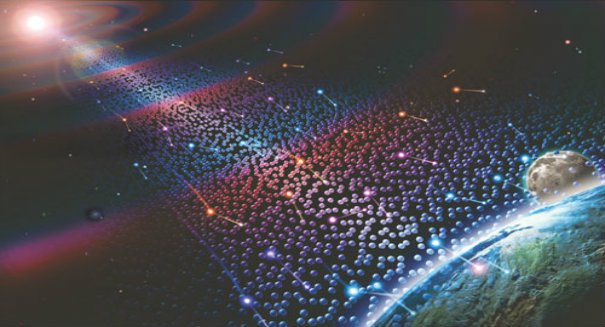 |
| Image Source: natureworldreport.com |
An observatory in the Antarctic ice has detected ghostly and nearly mass less particles coming from inside the galaxy and points beyond the Milky Way. The scientists have found the neutrinos and finding these cosmic particles not only confirms their existence but also provides insight on the origins of cosmic rays. The IceCube Neutrino Observatory is made up of 86 shafts dug 8,000 feet into the ice near the South Pole. The shafts of the observatory are equipped with detectors that look for the telltale light from the high energy particles plowing through the surrounding ice. Neutrinos are subatomic particles produced by the decay of radioactive elements. They are elementary particles that lack an electric charge. They are also almost mass less and can zip through matter so easily that a block of lead a light –year across would not be able to stop them. The other modes of their production could be exploding stars, black holes or galactic cores. These neutrinos also do not interact a lot with matter and sometimes only one might hit an atomic nucleus on Earth. In this process, another particle called the muon is created. Muon is a very interesting particle for the scientists and they always look for it while searching for neutrinos as the muons have the ability to move faster than the speed of light through a solid medium and generate light waves like the ones that are made by a boat in the water called the Cherenkov radiation. The speed of light is comparatively slower in a medium like glass or ice, which is why the muons give the perception that they travel at speeds faster than light.
Although the neutrinos were found back in 2013 but to confirm the detection, researchers, led by a team at the University of Wisconsin-Madison, had to make sure that these neutrinos were not coming from sources from within the Milky Way galaxy. Over the course of two years, between May 2010 and May 2012, the observatory logged more than 35,000 neutrinos, with 20 of them containing enough energy to suggest that they originated from a cosmic source.
These 20 neutrinos, called the muon particles, came from the opposite direction, but at approximately same rate like the neutrinos observed in the earlier runs. A professor for the University said, “At least a fraction of that flux is of extra galactic origin. This was new discovery.” The study was published in the the Journal Physical Review letters.





















